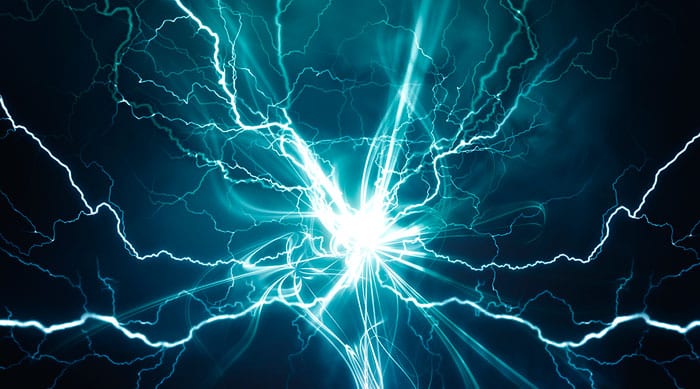Scottish Government releases its 2030 vision for networks
The Scottish Government has released its vision for Scotland's electricity and gas networks.
14th March 2019 by Networks

Scotland’s electricity and gas networks: vision to 2030 document looks at the ways in which Scotland’s electricity and gas network infrastructure will continue to support the energy transition.
Key points include supporting:
- An inclusive transition to a decarbonised energy system
- A whole system approach across heat, transport and electricity, and
- Smarter, local energy models.
The document describes the part networks must play in meeting the target from Scotland’s 2017 energy strategy of supplying half of the country’s energy needs across power, heat and transport from renewable sources by the end of the next decade.
Speaking in the foreword, Paul Wheelhouse MSP, Minister for Energy, Connectivity and the Islands said: “Our vision for the networks highlights the growing complexity, technical challenges, structural changes and new technologies that together have the potential to fundamentally alter the relationship between consumers and the networks. It also shows the unique opportunity that exists in Scotland to lead the development of networks that are fit for the 21st Century, enabling and sustaining a truly low carbon economy – for example, through Scottish Government’s role in the planning and consenting of new energy infrastructure in Scotland.
“For this to be effective, we need organisations to work in partnership and to deliver networks which support wider social and economic aims – including the economic aspiration of our remote rural areas and 93 inhabited islands.
“We are already working closely with the UK Government and Ofgem to understand and support work on the future design of our networks. We remain determined to ensure that, at all times, Scotland’s priorities are properly understood and reflected in any decision making that impacts on the networks.”
The Scottish Government will take a number of actions to help it achieve its goals. These will include a Networks Summit, to be held in Scotland later this year, and the creation of a Scottish Energy Networks Group focussed on the issues set out in the document.
Scott Mathieson, network planning & regulation director at SP Energy Networks, said: “I’m pleased to see the publication of the Scottish Government’s Networks Vision and to see energy networks at the heart of the effective low carbon transition, enabling universal access for all in Scotland and across Great Britain. I fully support this vision which rightly positions the consumer at the centre of the design of networks in Scotland; particularly as there is a focus on addressing the challenges of integrating heat and transport electrification into the existing electricity distribution networks.
“Here at SP Energy Networks (SPEN), we’re uniquely positioned to understand the whole energy system of the future because we operate across transmission and distribution and are the only network company to operate across Scotland, England and Wales. In Scotland we’ve had to meet the challenges of decarbonisation earlier and quicker than other areas of the UK, and we are at the forefront of the transformation to deliver the flexible, smarter network of the future whilst ensuring the best value for our customers.”
David Smith, chief executive of the Energy Networks Association, added: “We welcome the publication of the Scottish Government’s Vision for the networks. Energy networks have been investing heavily in Scotland to significantly reduce the number and length of power cuts while keeping gas flowing safely to heat peoples’ homes. This is reflected in the record levels of customer satisfaction.
“As we look towards the 2020s, the public must be at the heart of the Government’s vision so we support the approach of looking at how the whole system works together to help reduce emissions and keep bills low. We agree that trials for options such as dedicated hydrogen networks will be vital to develop the solutions customers want.
“As new technologies like electric vehicles or smart hybrid heating systems are chosen, the networks are already changing the way they manage the system. We back the Scottish Government’s vision for a low carbon gas network with roles for hydrogen and biomethane along with a smart, flexible electricity network to provide the best service for the public.”
Comments
Login on register to comment
Related content

Gas
Cadent backs launch of major bio-CNG HGV refuelling station
Gas network’s £250,000 infrastructure investment ensures supplies to existing connected customers have not been impacted

Gas
Editor’s blog: The biggest tests of resilience are yet to come
Network content director Jane Gray reflects on the industry's coronavirus response to date and the challenges still to come.

Gas
From the front line: Chris Garside and Andy Simcoe, Northern Gas Networks
Key workers across the power and gas networks are playing a critical role in the national response to Coronavirus. Network has committed to profiling their stories.
Related supplier content
![‘Learning by doing’ on the road to net zero [test product]](https://networksonline.s3.amazonaws.com/products/images/3.jpg)
People & Skills
‘Learning by doing’ on the road to net zero [test product]
DSO director Andrew Roper discusses 'Learning by doing'

Power
Load patterns and lockdown: how Covid-19 is impacting electricity networks
Insights into dynamics on the low voltage network as the outbreak unfolds

Downloads
Protect electrical equipment from insulation failure
Insulation faults are a major cause leading to the eventual failure of electrical equipment. Partial discharge (PD) is a very reliable indicator of developing insulation faults. Regular PD testing allows users to detect and analyze PD activity